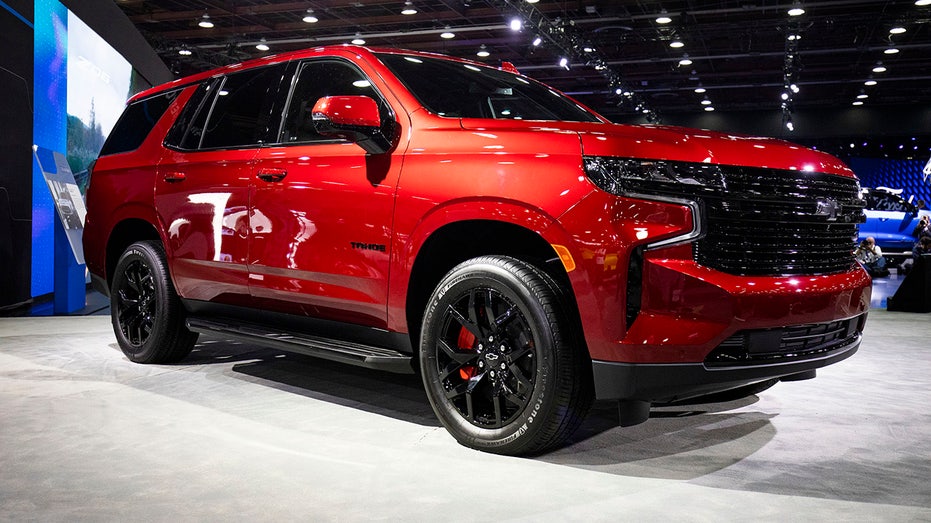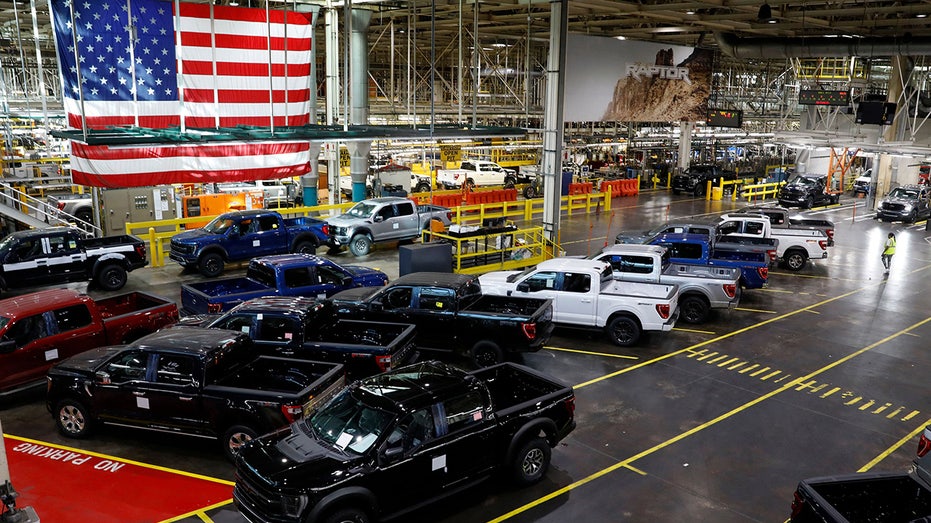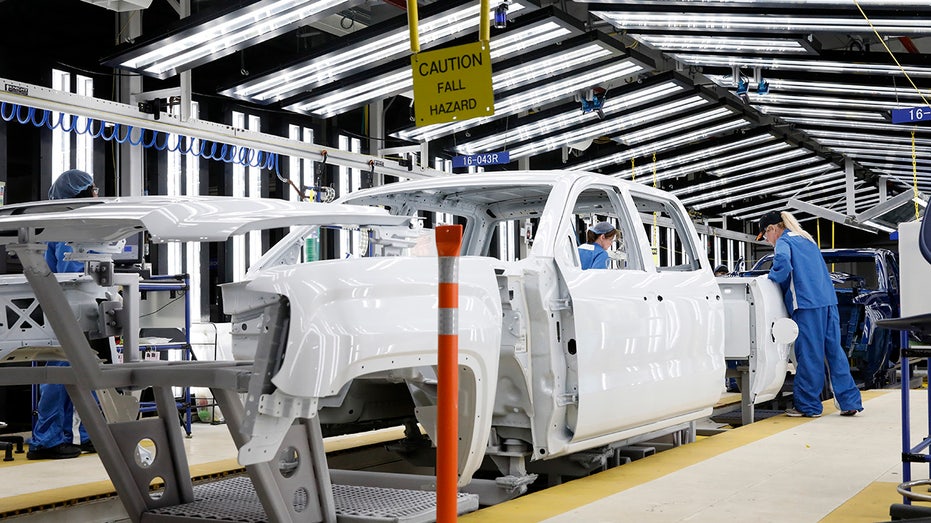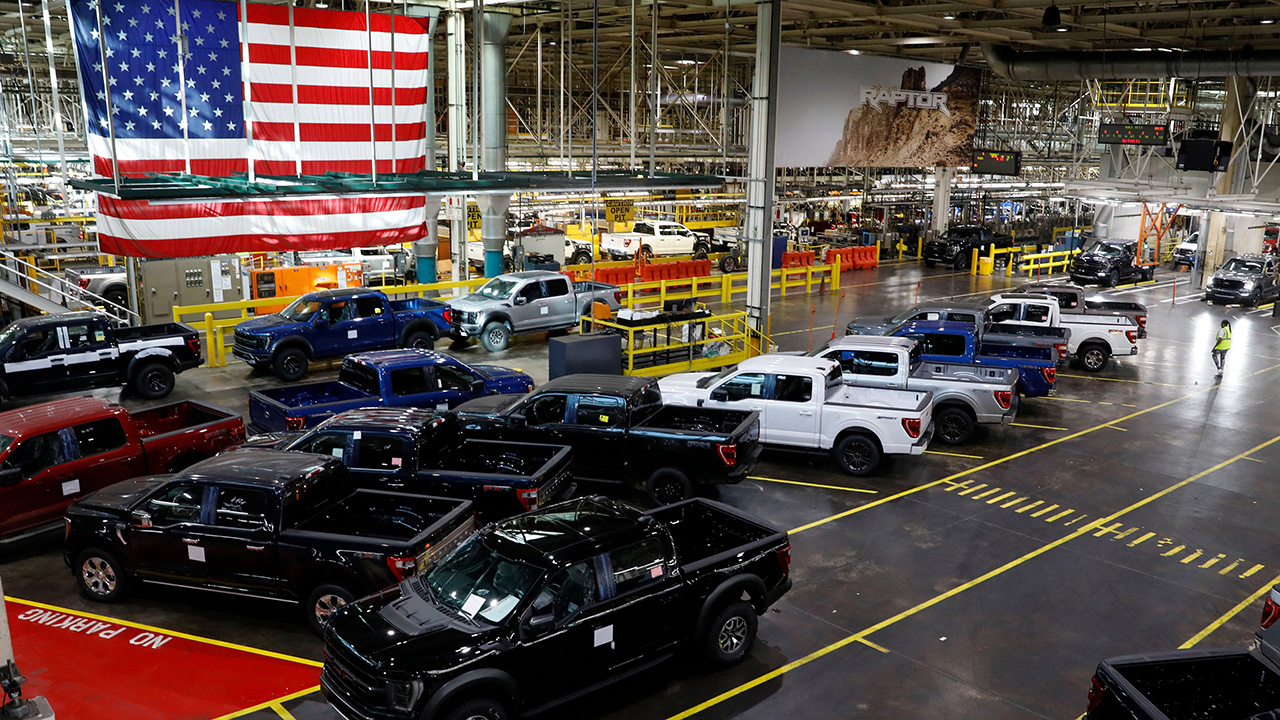Ford and GM's gas and diesel-powered trucks aren't going anywhere soon
American automakers continue to invest in internal combustion engine vehicles
General Motors and Ford both have their feet firmly on the gas pedal.
Even as they commit tens of billions of dollars toward future electric vehicle development, they’ve been making major investments in internal combustion engine (ICE) vehicles that they plan to build into the next decade.
So far this year, GM has announced more than $2 billion in spending to build new full-size trucks and SUVs and a new generation of V8 engines that will power them.
"The ICE age is not over," GM President Mark Reuss told FOX Business at GM’s most recent investor day event.
| Ticker | Security | Last | Change | Change % |
|---|---|---|---|---|
| GM | GENERAL MOTORS CO. | 80.82 | -0.09 | -0.11% |
GM TO USE TESLA'S CHARGING NETWORK FOR EVS

The Chevrolet Tahoe is the best-selling full-size SUV in the U.S. (Bill Pugliano/Getty Images)
"We’re not going to abandon our internal combustion engine segments," Reuss said. "We’ve got truck leadership with GMC and Chevrolet. We’ve got it across our midsize trucks, our full-size trucks and then beyond."
General Motors
Ford has gone so far as to separate the company into new divisions, with Ford Blue dedicated to ICE and hybrid models and Model e focused solely on electric vehicles.
| Ticker | Security | Last | Change | Change % |
|---|---|---|---|---|
| F | FORD MOTOR CO. | 13.60 | -0.21 | -1.52% |

The Ford F-Series could be a Fortune 100 company on its own. (Jeff Kowalsky/AFP via Getty Images / Getty Images)
"In Ford Blue, the team is focused on capitalizing on our red-hot product lineup," Ford CEO Jim Farley said during the company’s first-quarter earnings call, referring to top-selling models like the gas and diesel-powered versions of its best-selling F-Series truck lineup.
"In essence, in the U.S., internal combustion engines will be important in larger vehicles for at least another decade2, and a huge percentage of profits for GM, Ford and [Ram parent] Stellantis come from full-size pickups, large SUVs and heavy-duty pickups that will be hard to replace with electric vehicles," said Mike Ramsey, vice president/analyst of automotive and smart mobility at Gartner.
Ford
Ford F-Series sales are so strong that the lineup could be a Fortune 100 company by itself, and General Motors generates approximately $7.5 billion in pretax profit on its trucks annually, according to Automotive News.
FORD TRUCKS HELPED DRIVE SALES UP 10.7% IN MAY AS EVs SLIP
Farley has argued that battery power isn’t suited for the sort of long-haul towing Ford’s F-Series Super Duty trucks are often used for, which is one of the reasons the brand hasn’t committed to going all-electric until the technology is ready to support every customer’s need.

Ford CEO Jim Farley said electric pickups aren't suited for all customers, which is why it will continue to build gas and diesel trucks. (Jeff Kowalsky/AFP via Getty Images / Getty Images)
"In the meantime, automakers are continuing to develop and support internal combustion vehicles," said Tyson Jominy, vice president of data and analytics at J.D. Power.
"ICE vehicles have several advantages to consumers, but to automakers their biggest advantage is that they are highly profitable, particularly for trucks and SUVs. Models that are already in market, that are built at existing plants and with existing technology, are helping to fund R&D into EVs, which have the opposite business profile. EVs are mostly new models and platforms built in new plants because the technology of batteries is new in the automotive world. All of that is expensive, and that means EVs are inherently risky."
Jominy compares the transition to the way U.S. automakers recently cut sedans from their lineups in favor of SUVs and trucks.
"SUVs were far more profitable than sedans. At some point, it becomes profitable only for a small handful of automakers to continue offering something. Consumers can still find compact and midsize sedans today, but the choices are far more limited than they were a decade ago. In the same way, internal combustion vehicles will be around for many more years to come, but choices will start to dry up."

General Motors has not yet announced plans to introduce battery-powered heavy-duty trucks. (Jeff Kowalsky/Bloomberg via Getty Images / Getty Images)
GM expects to have an annual global output of over 2 million EVs per year by 2025, with half that capacity in North America, while Ford is aiming to hit the 2 million mark in 2026, including a 600,000 annual U.S. capacity. Both of those figures standing against U.S. and global total sales that typically run in the 15-17 million and 70-90 million ranges.
"It’s likely that at least half of the U.S. market in 2030 will still be ICE vehicles, so that’s still a generation or two that needs investment or updates," Guidehouse Senior Research Analyst Mike Austin said.
"From a global perspective, developing markets will take longer to transition to electrification, so it’s smart to invest now before the volume decreases."
GET FOX BUSINESS ON THE GO BY CLICKING HERE
Austin added that some of the money being spent on ICE vehicles could continue to benefit EV production even after the last piston has been pumped.
"GM’s investment in assembly plants isn’t necessarily something that won’t contribute to the company’s commitment to go fully electric by 2035," Austin said.
"EVs still need body panel stamping and paint shops, just like ICE vehicles."




















